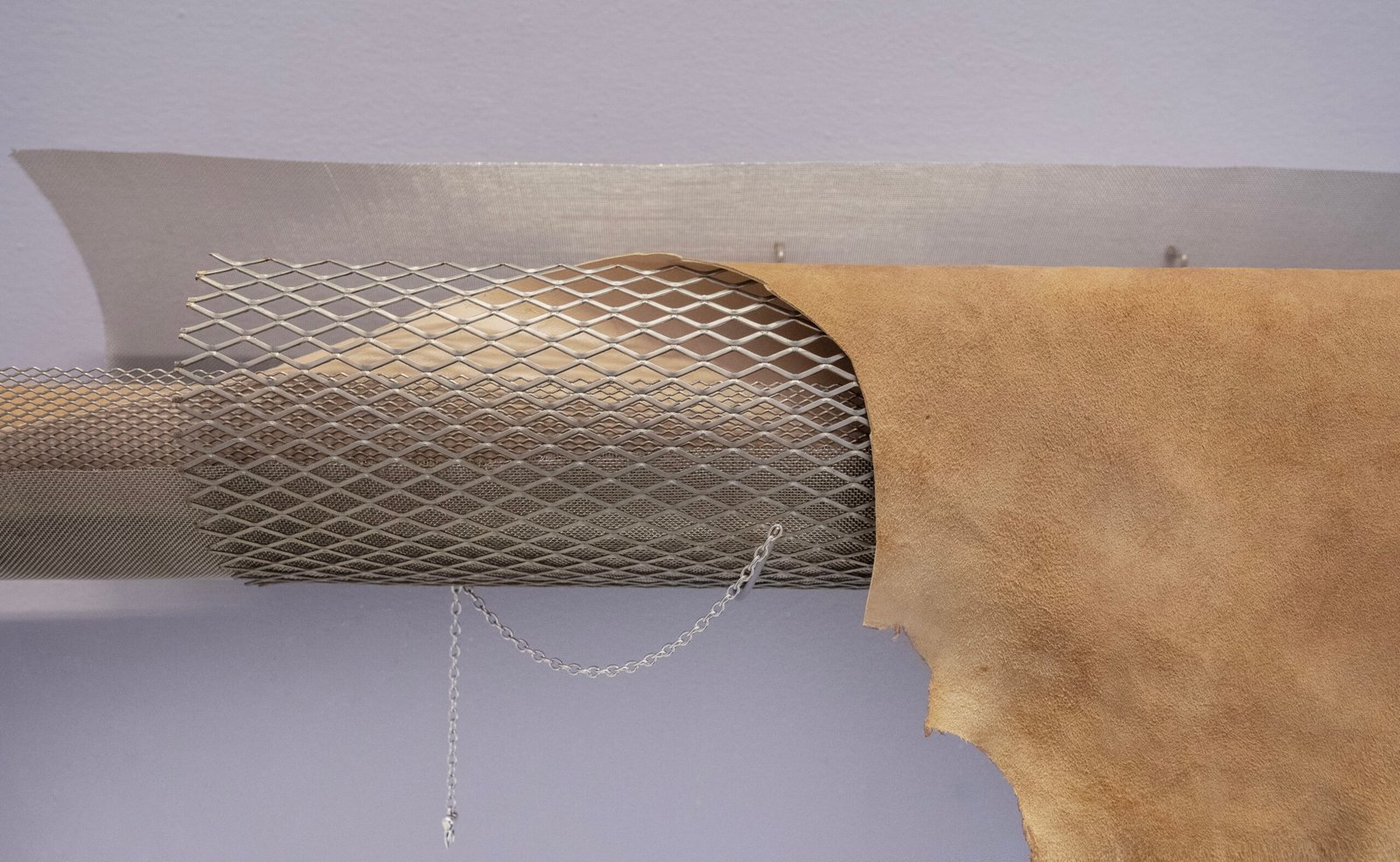

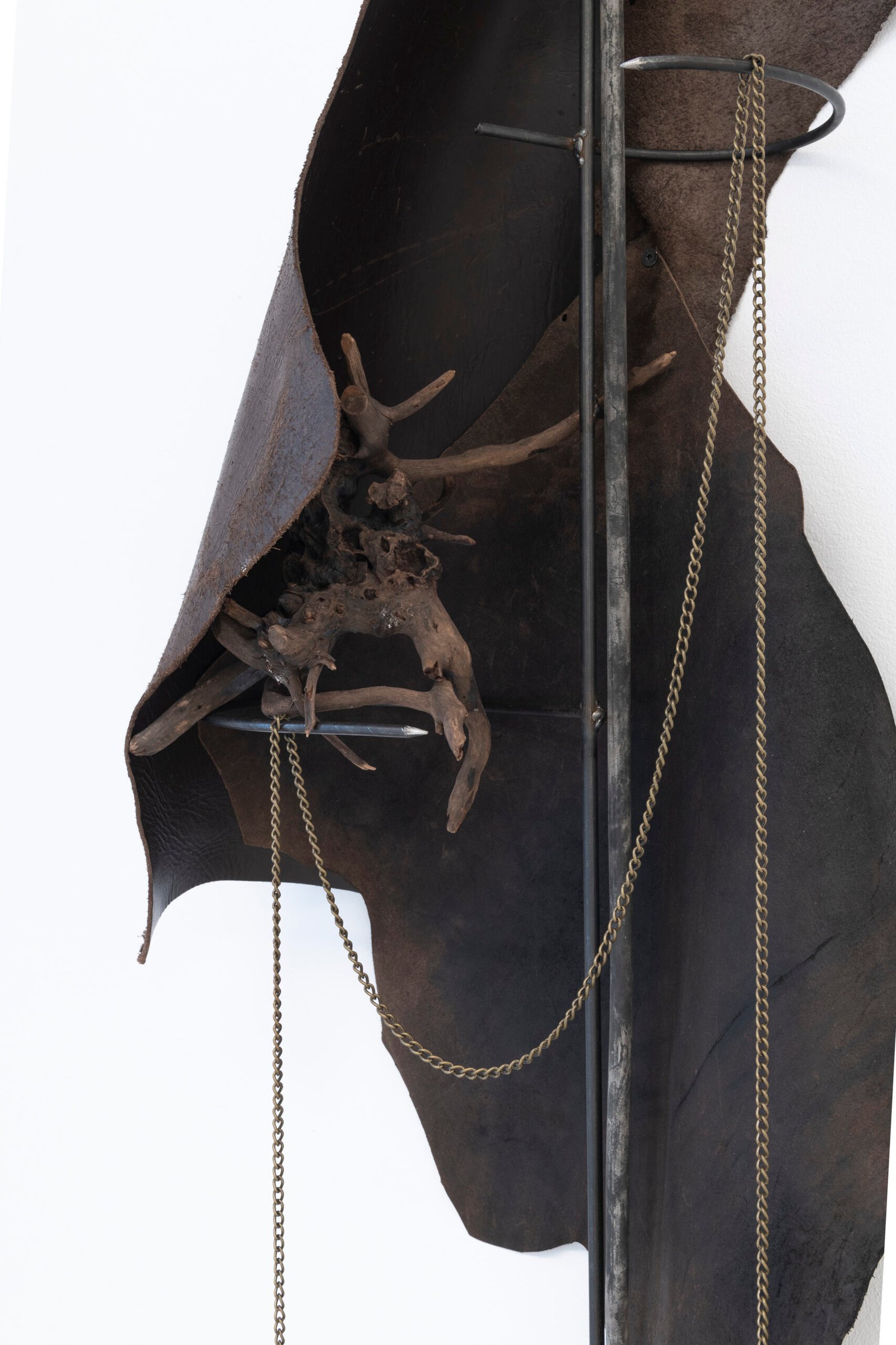

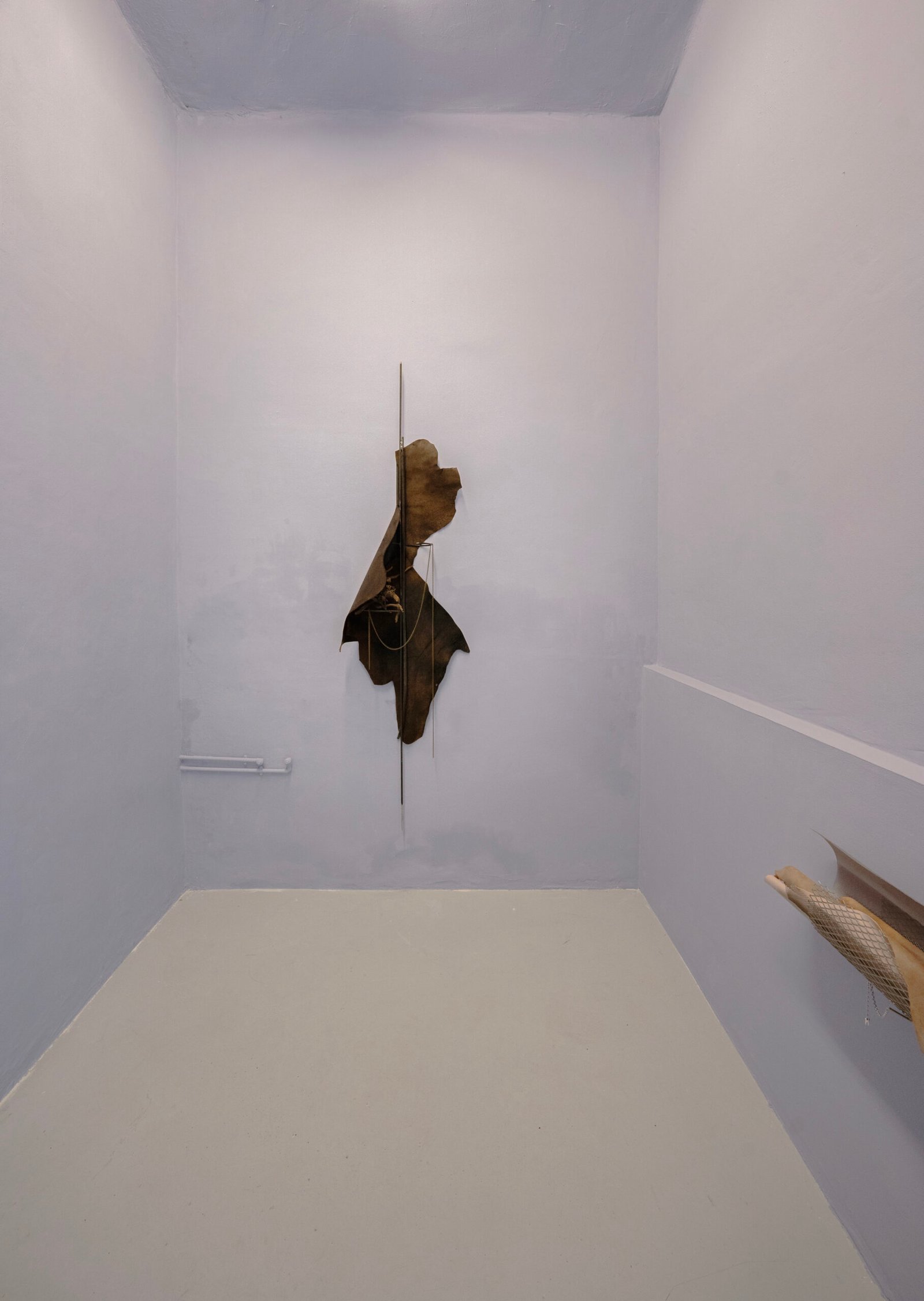


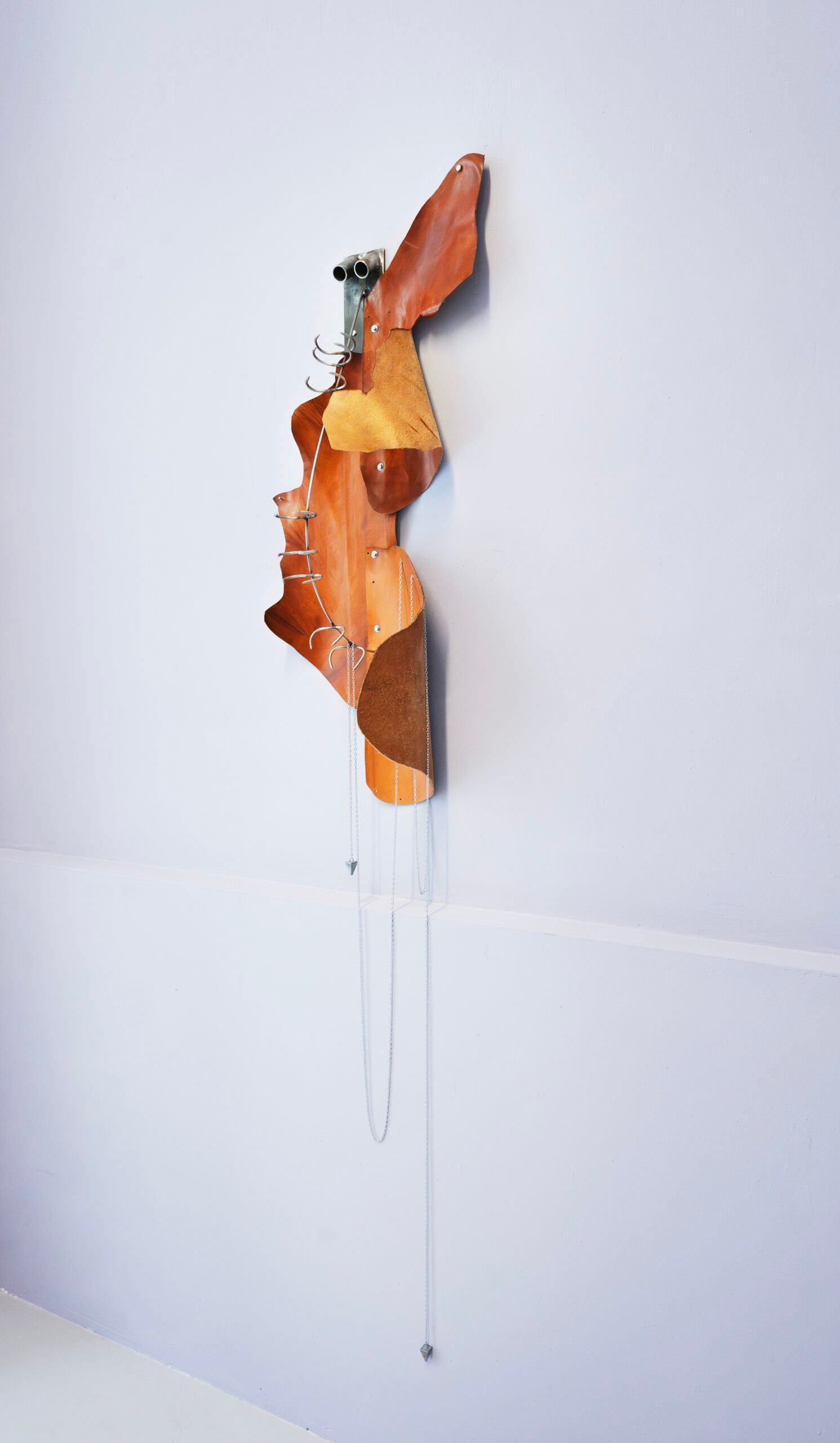
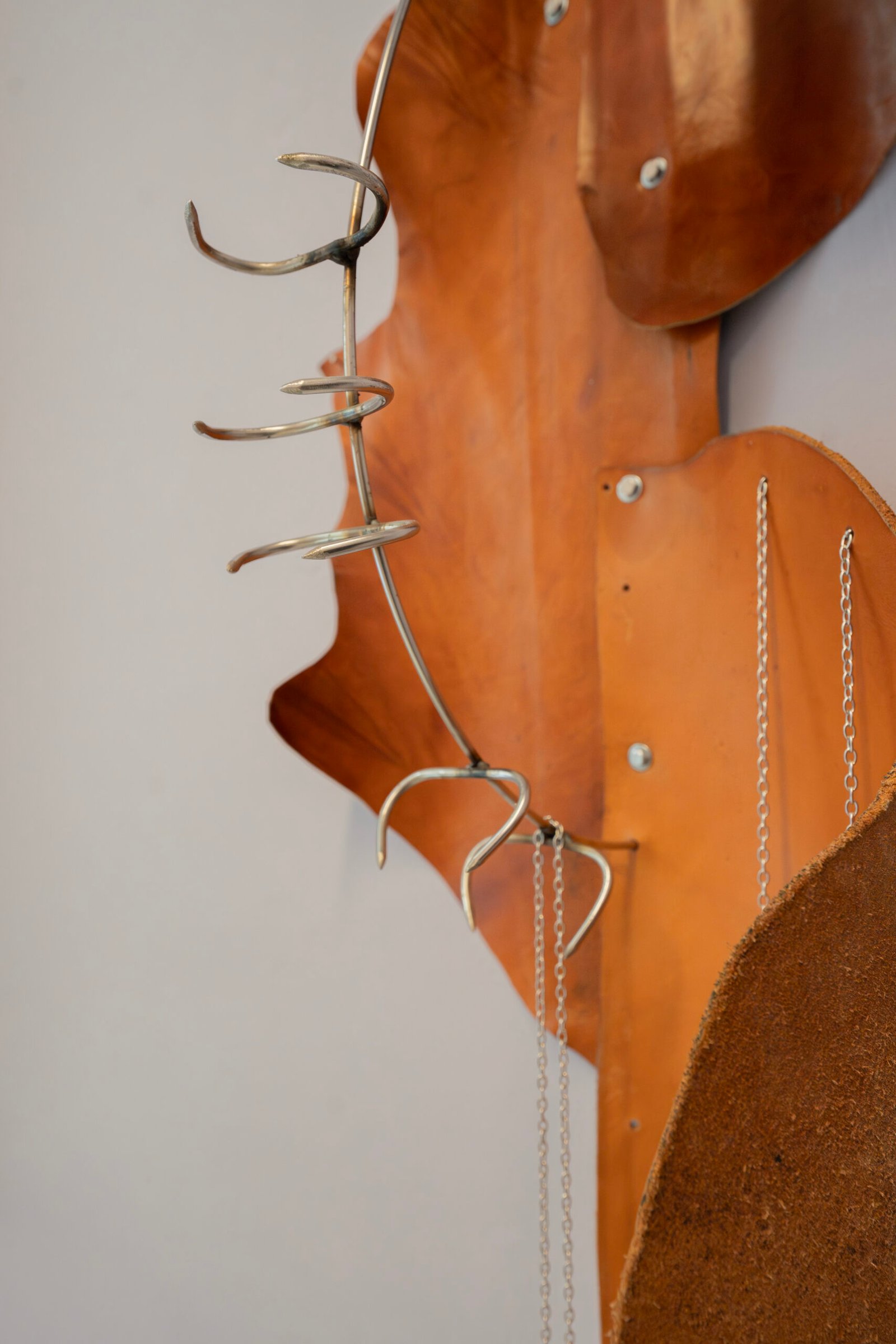

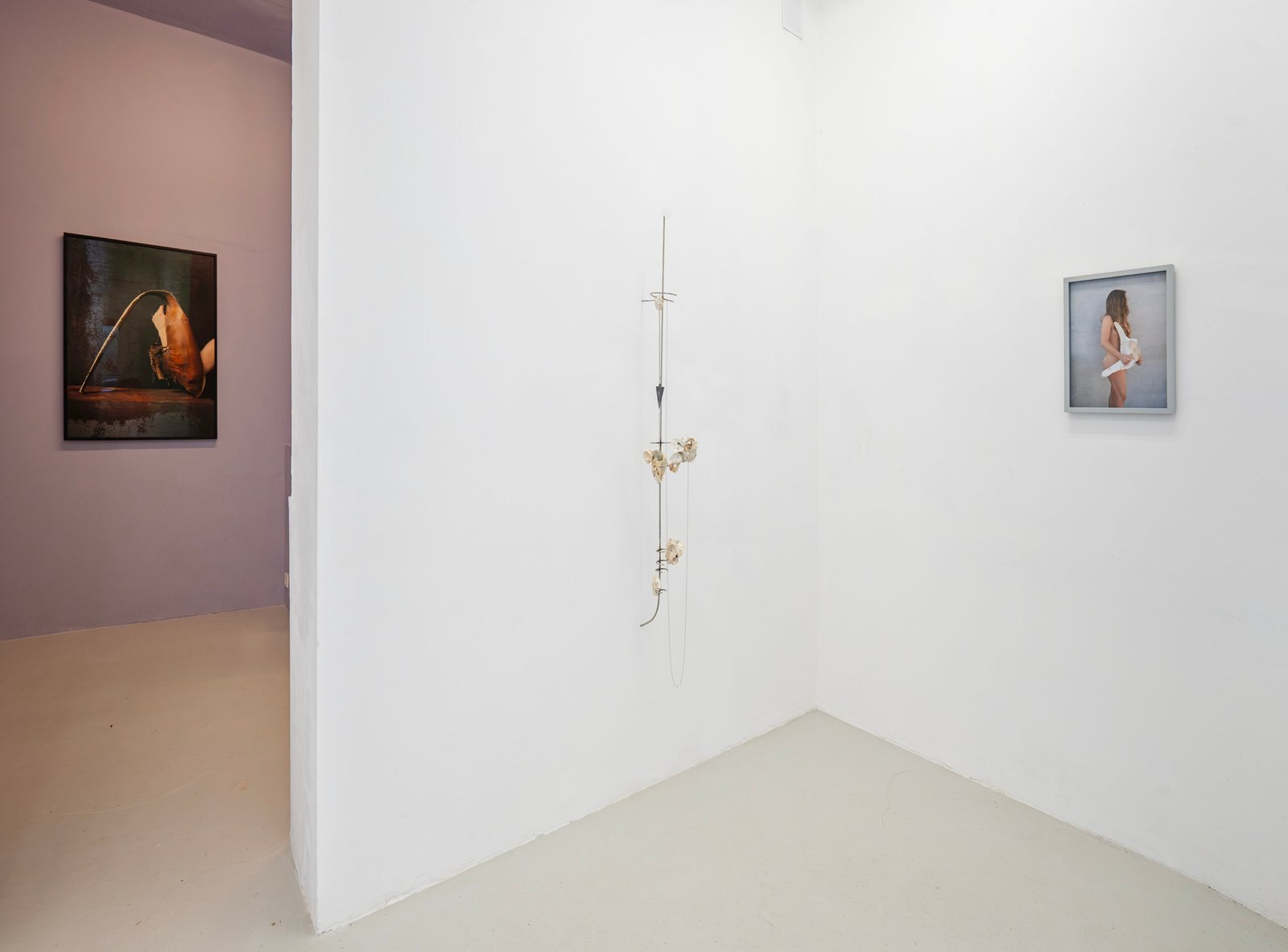


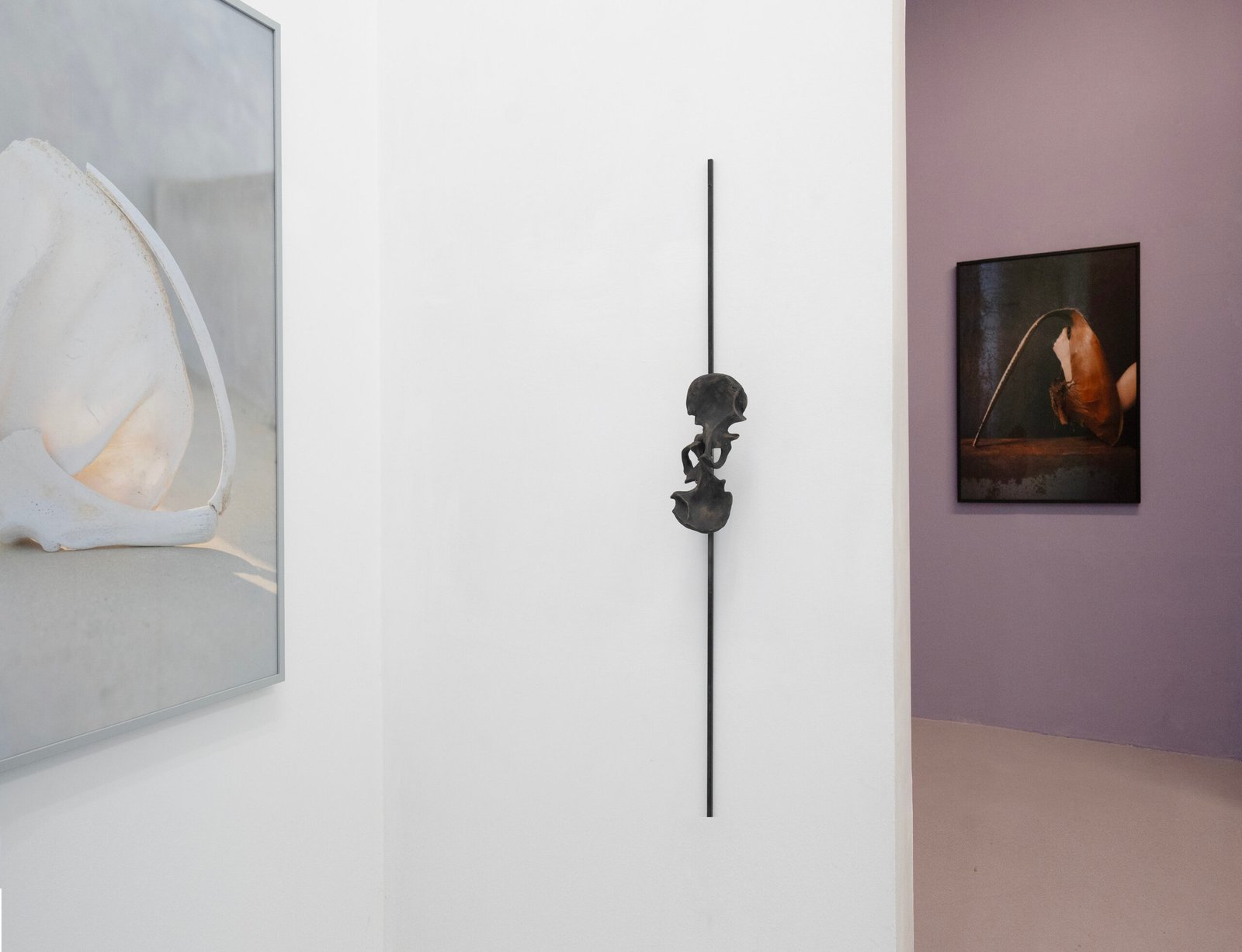
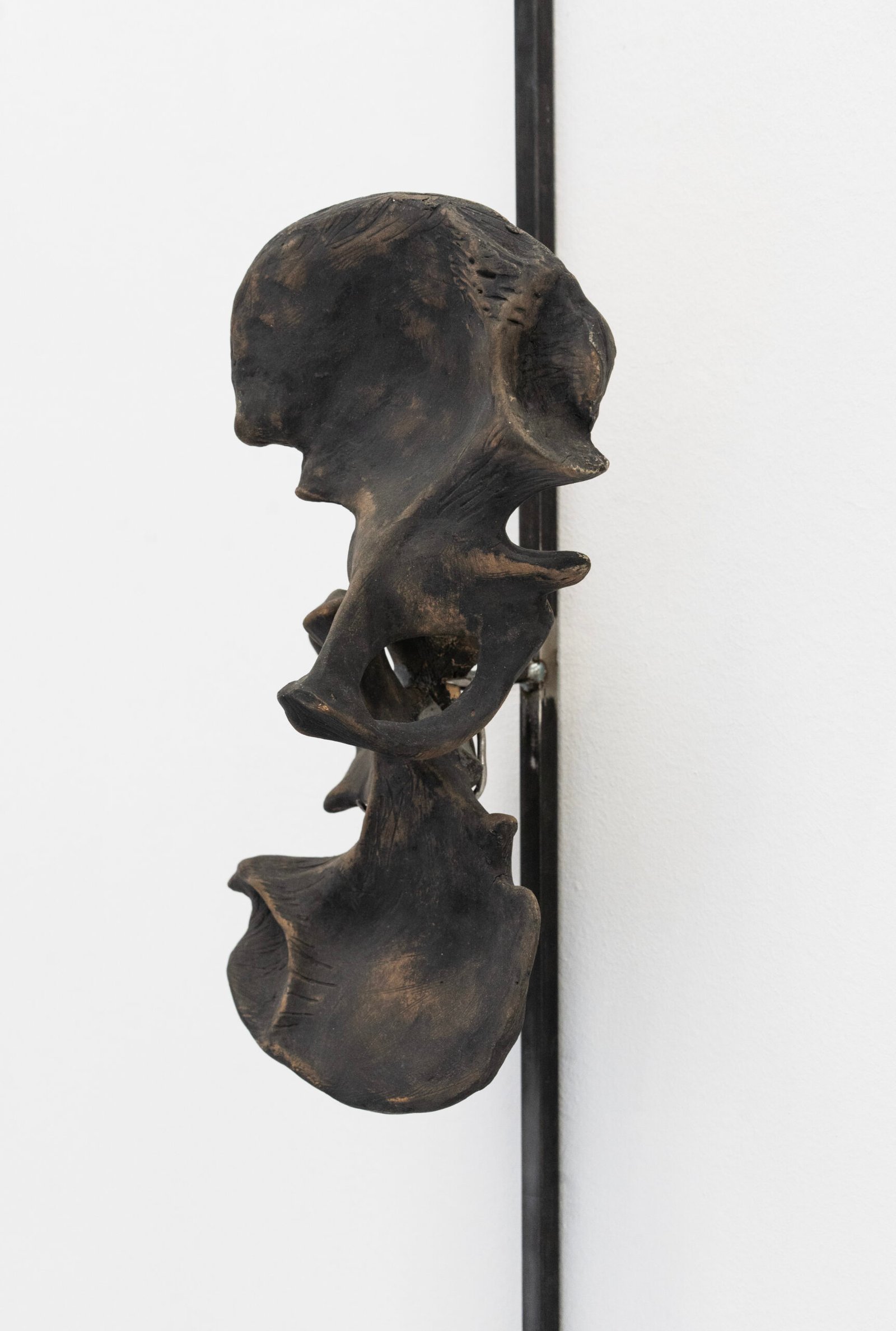
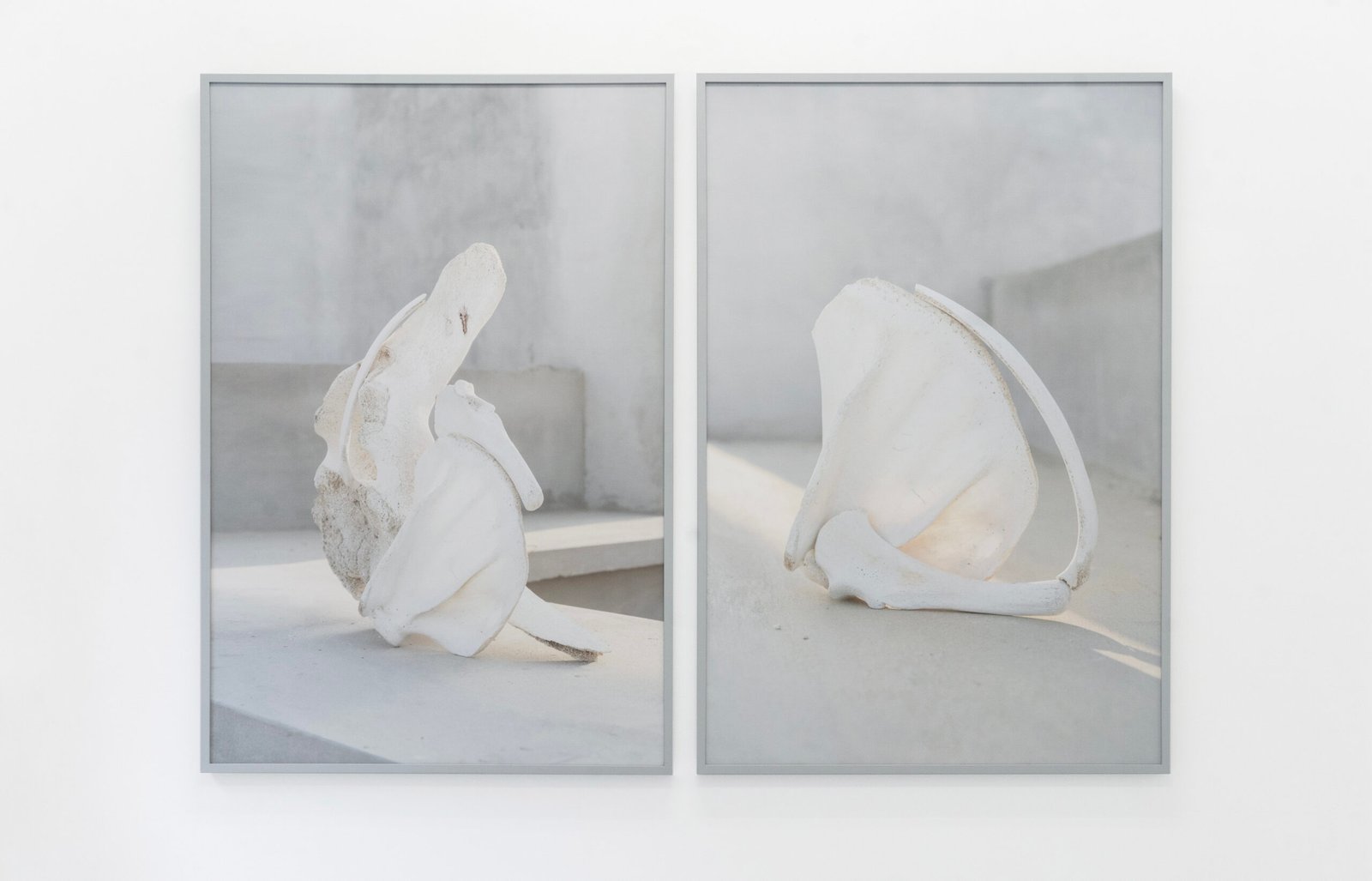
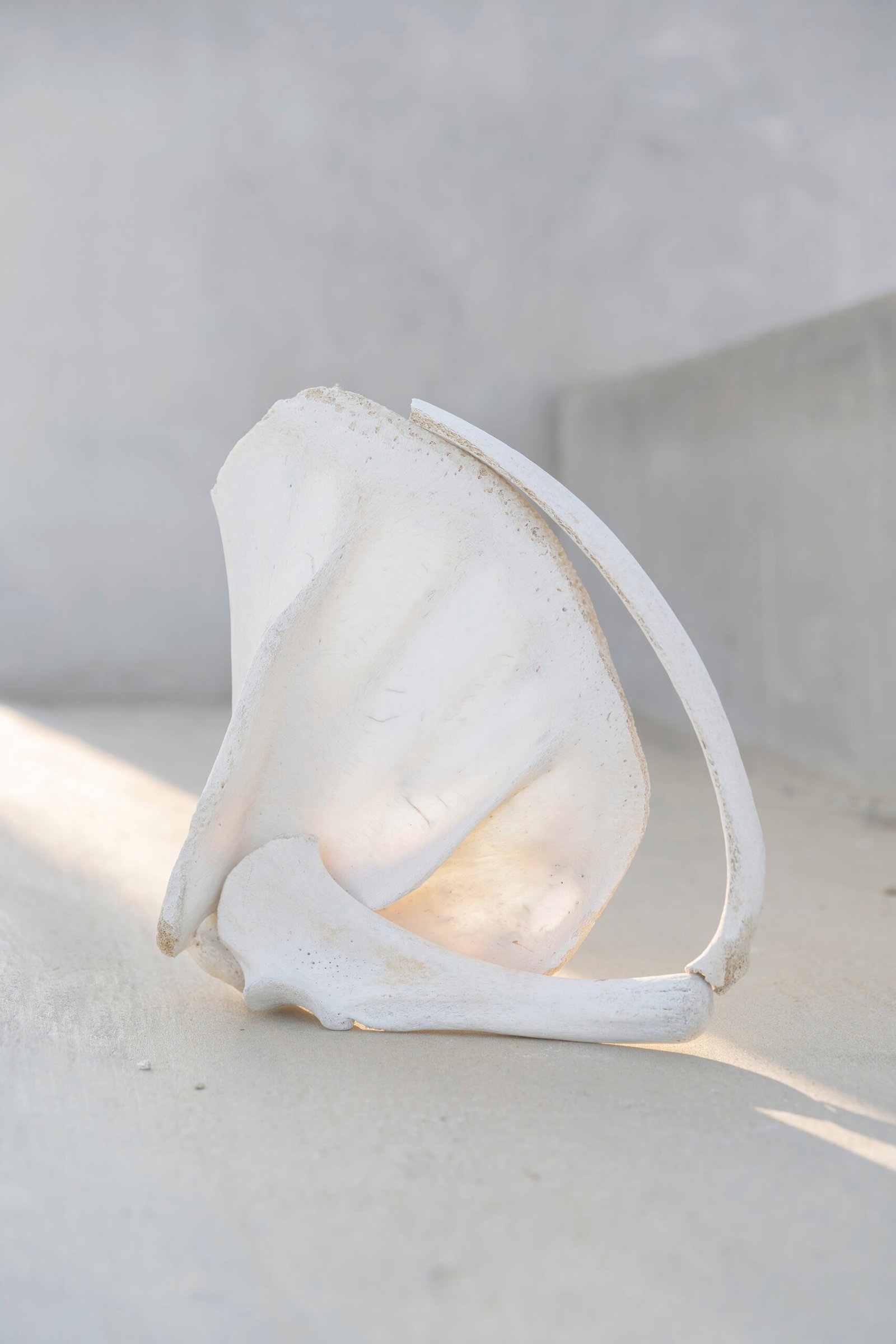

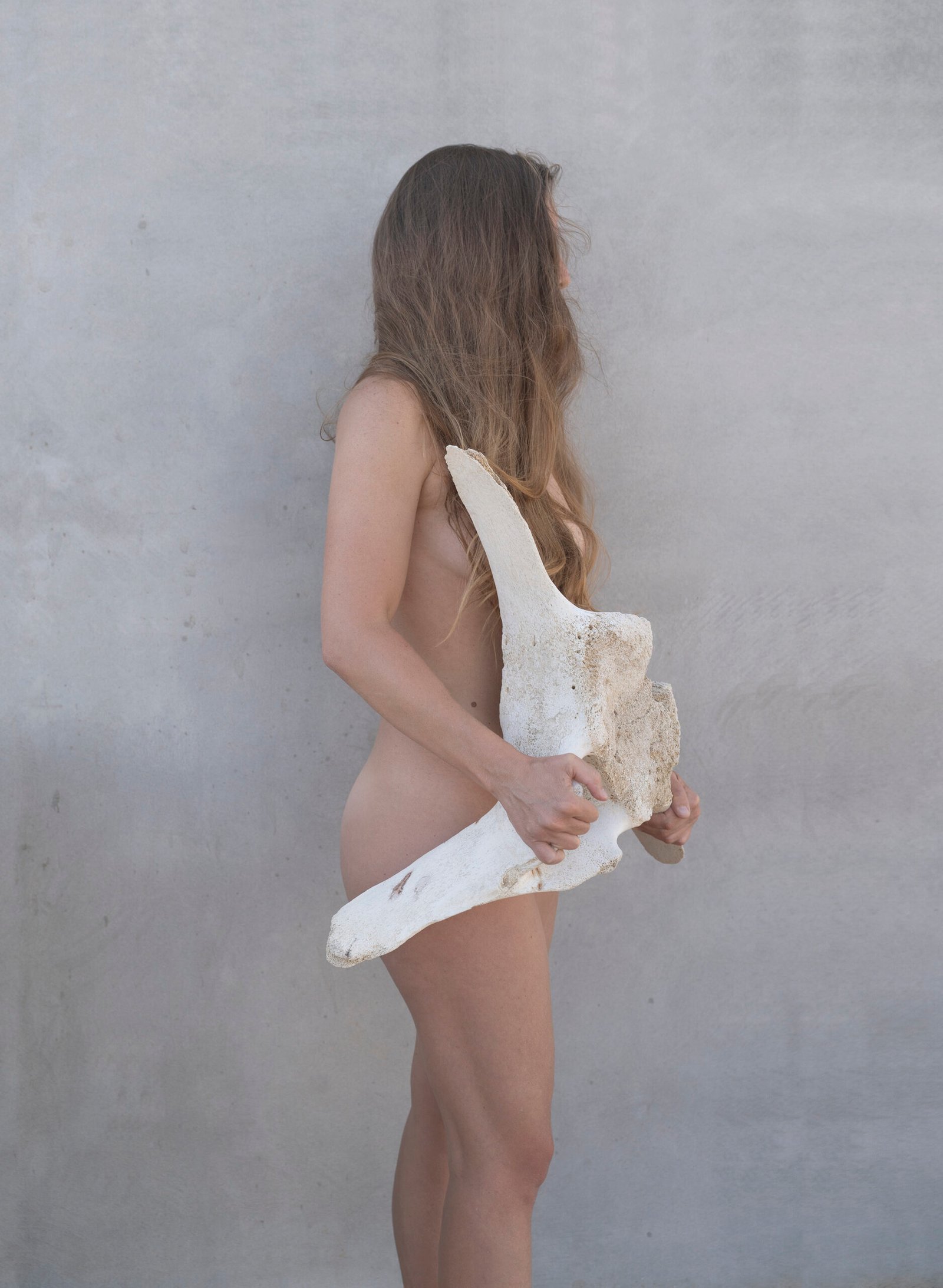
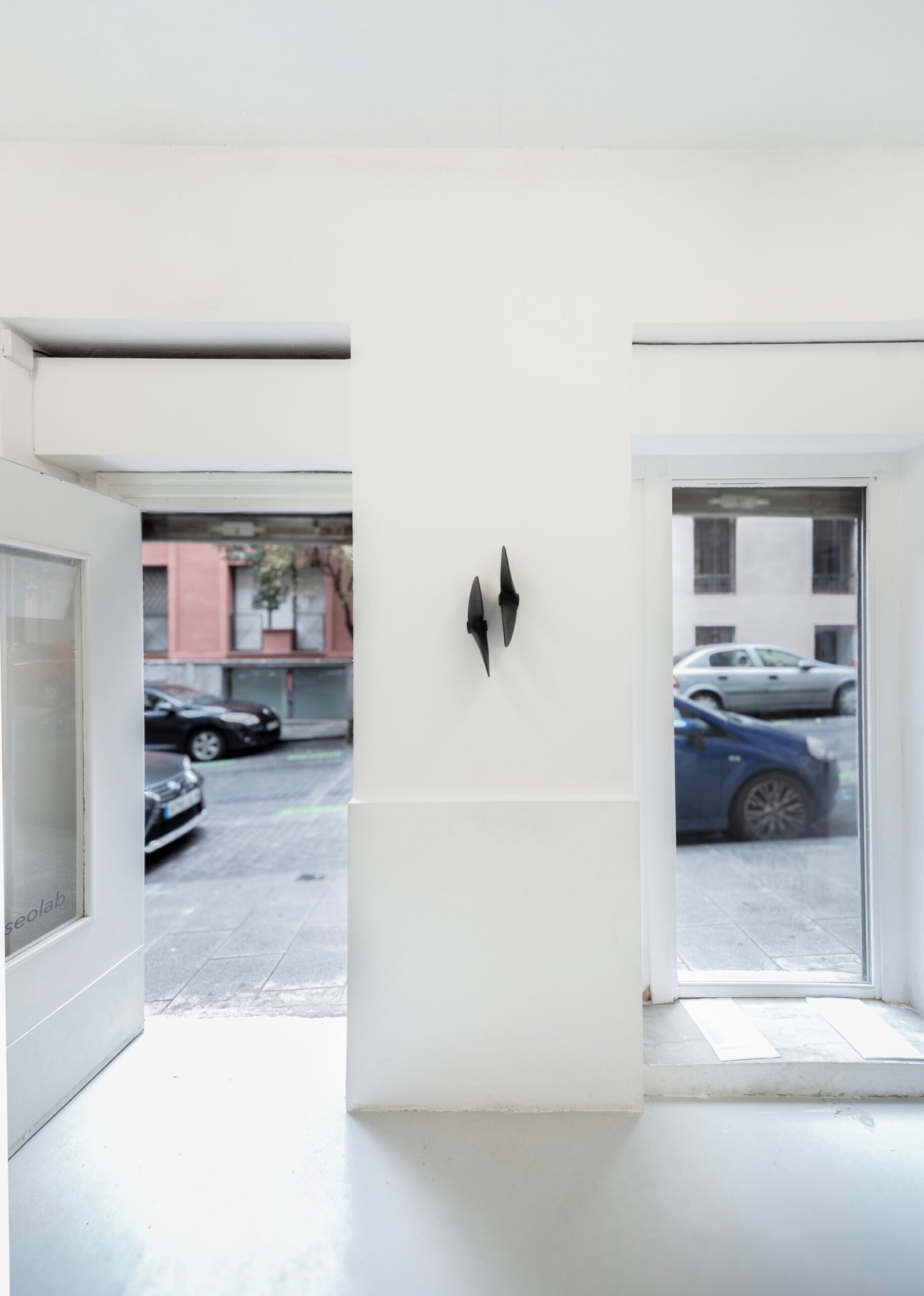



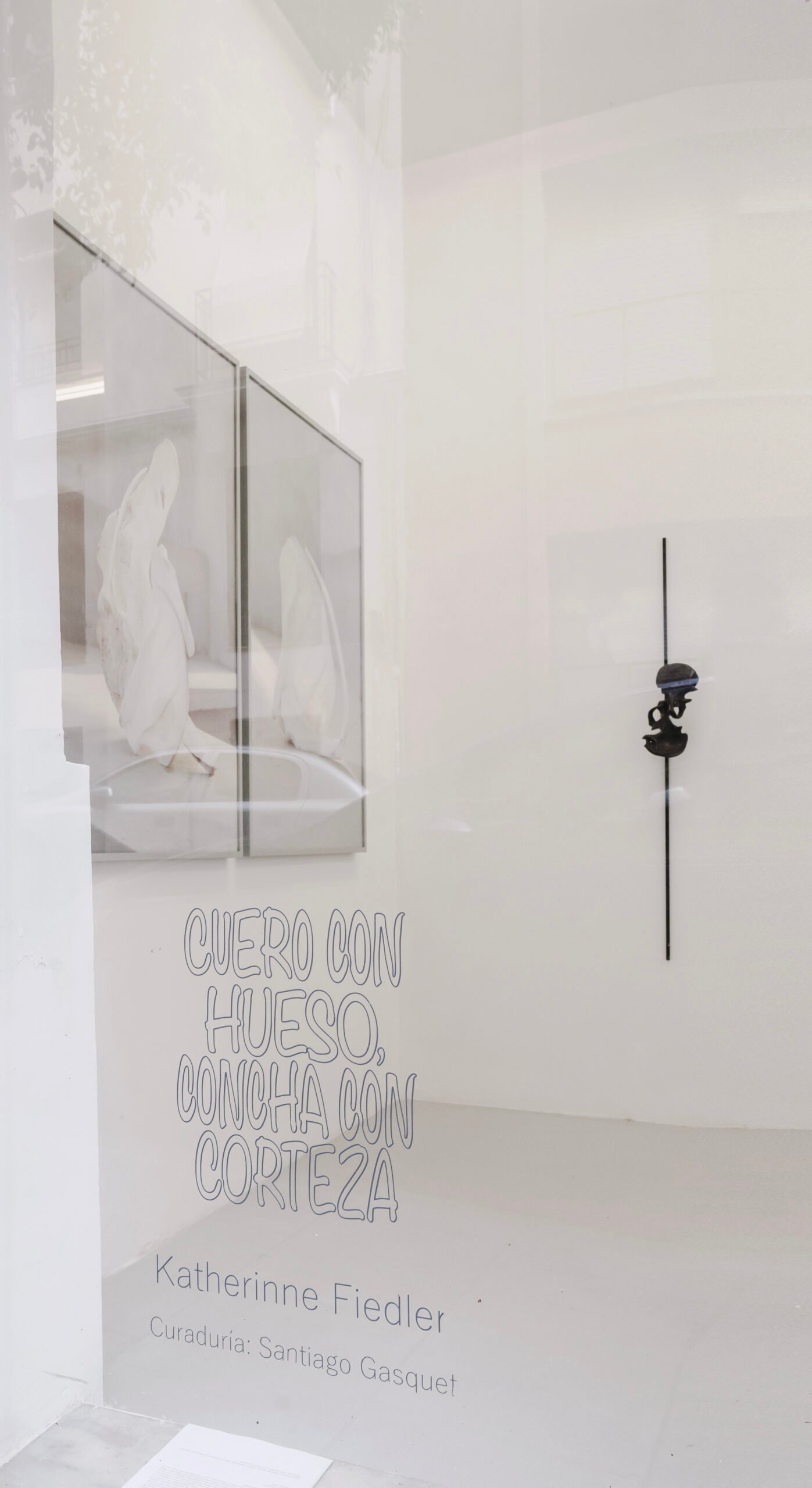

If we consider the body as the central axis of all politics, micropolitical gestures emerge as key players in epistemological conflicts. These “minor knowledges,” which strive daily to transform historical power relations, challenge hegemonic constructs and advocate for a shift in hierarchies through horizontal and affective exchanges.
Katherinne rises at dawn, knowing she must reach the beach before the tide comes in if she wants to find the remnants left by the last swell. There, she gathers a few shells, bones of marine animals, stones, and returns to her home at the top of the hill, in northern Peru. On the way back, climbing upward, she picks up fallen tree bark, sun-scorched flowers, and other elements. She carries them in her arms and on her back, trying to make them fit with parts of her own body.
In Cuero con hueso, concha con corteza, the artist engages in an intimate exercise of observing the elements she finds along the way and collects from her surroundings. These objects, once parts of living beings, are now inanimate fragments that come together in her studio: a sort of laboratory for combinatory experiments governed by an intuitive logic. By assembling, separating, adding, subtracting, perforating, cooking, molding, gluing, and welding, Fiedler constructs new corporealities that invite contemplation—as a record of evolution, of movement within an ecosystem where forms are transformed as they advance, joining through ever-shifting, mutating relationships. These are cartographic compositions that represent an acknowledgment of a fragmented personal geography, one that seeks to reconfigure itself through these objects. As if, in looking at them, she could see herself reflected in these leathers, these bones, these shells, these barks—and in that reflection, discover within herself the desire for change.
Santiago Gasquet